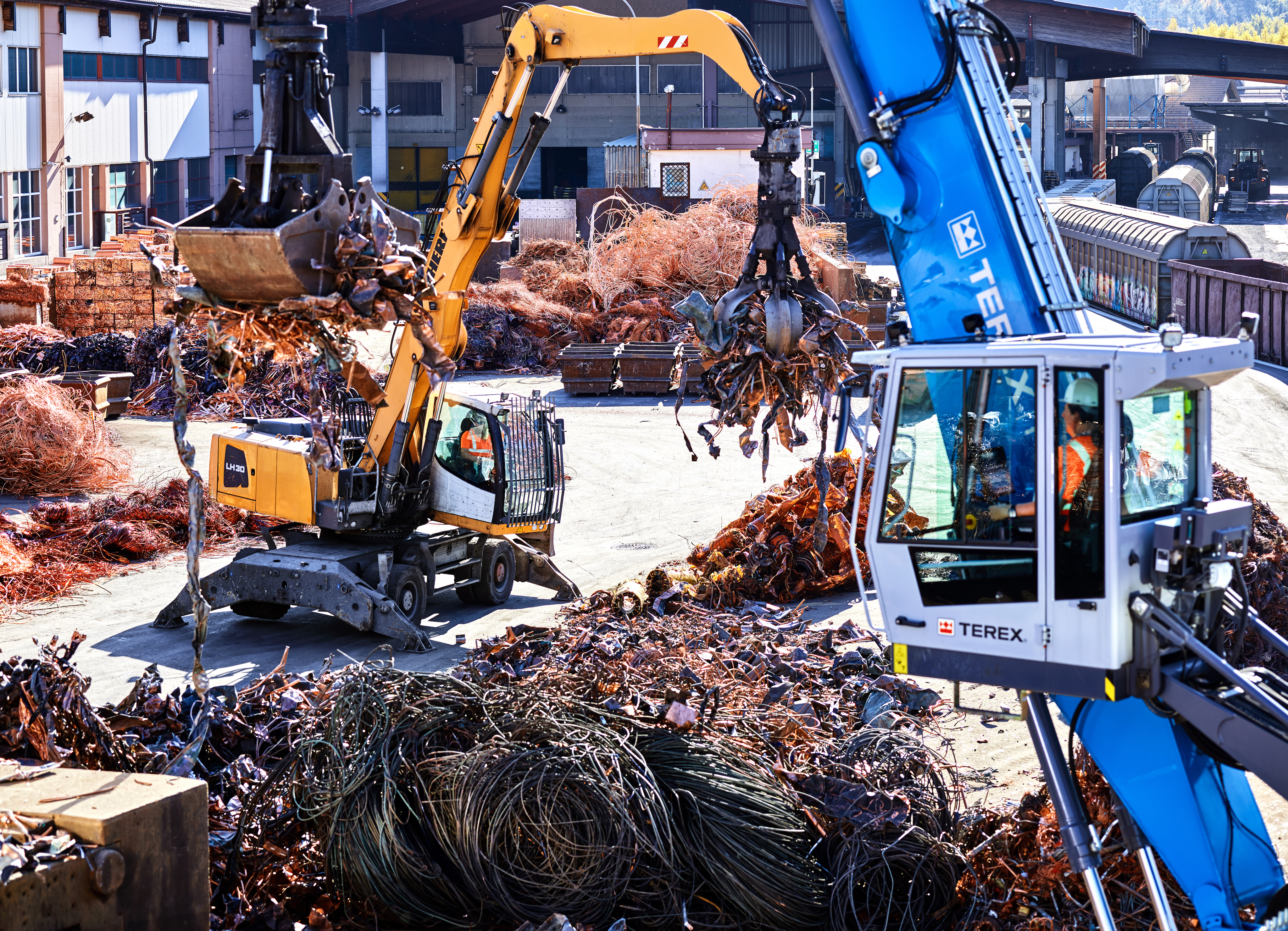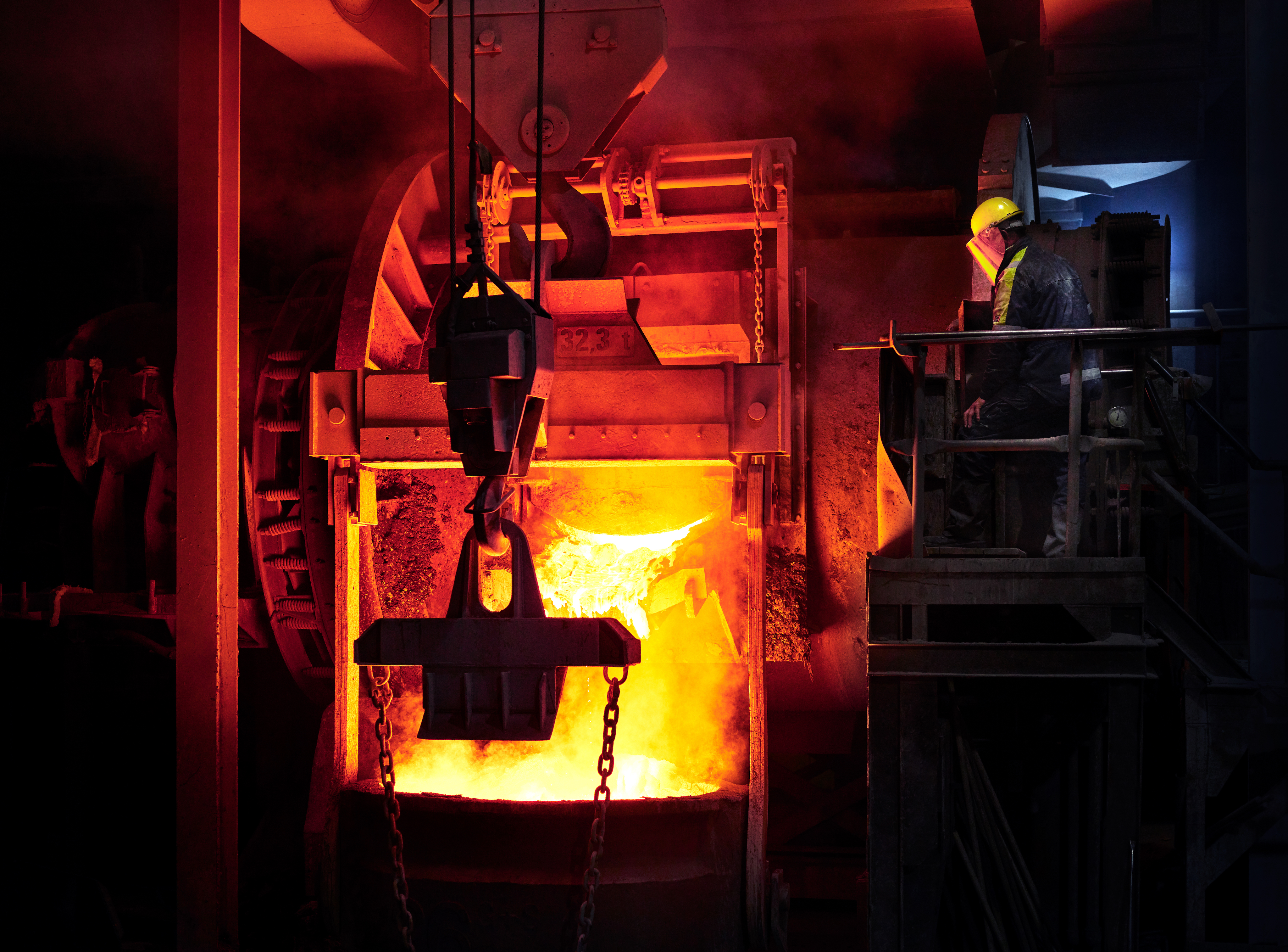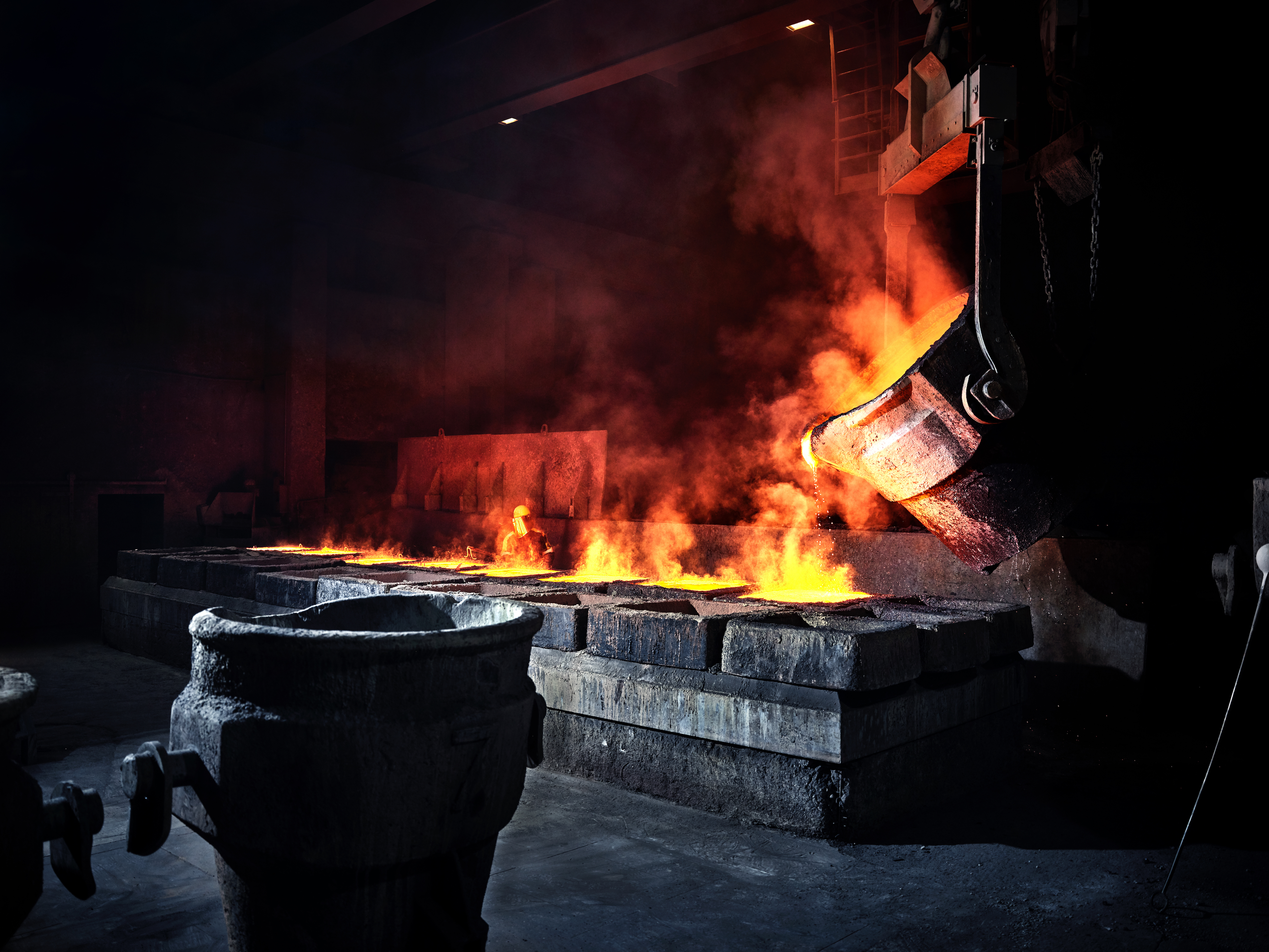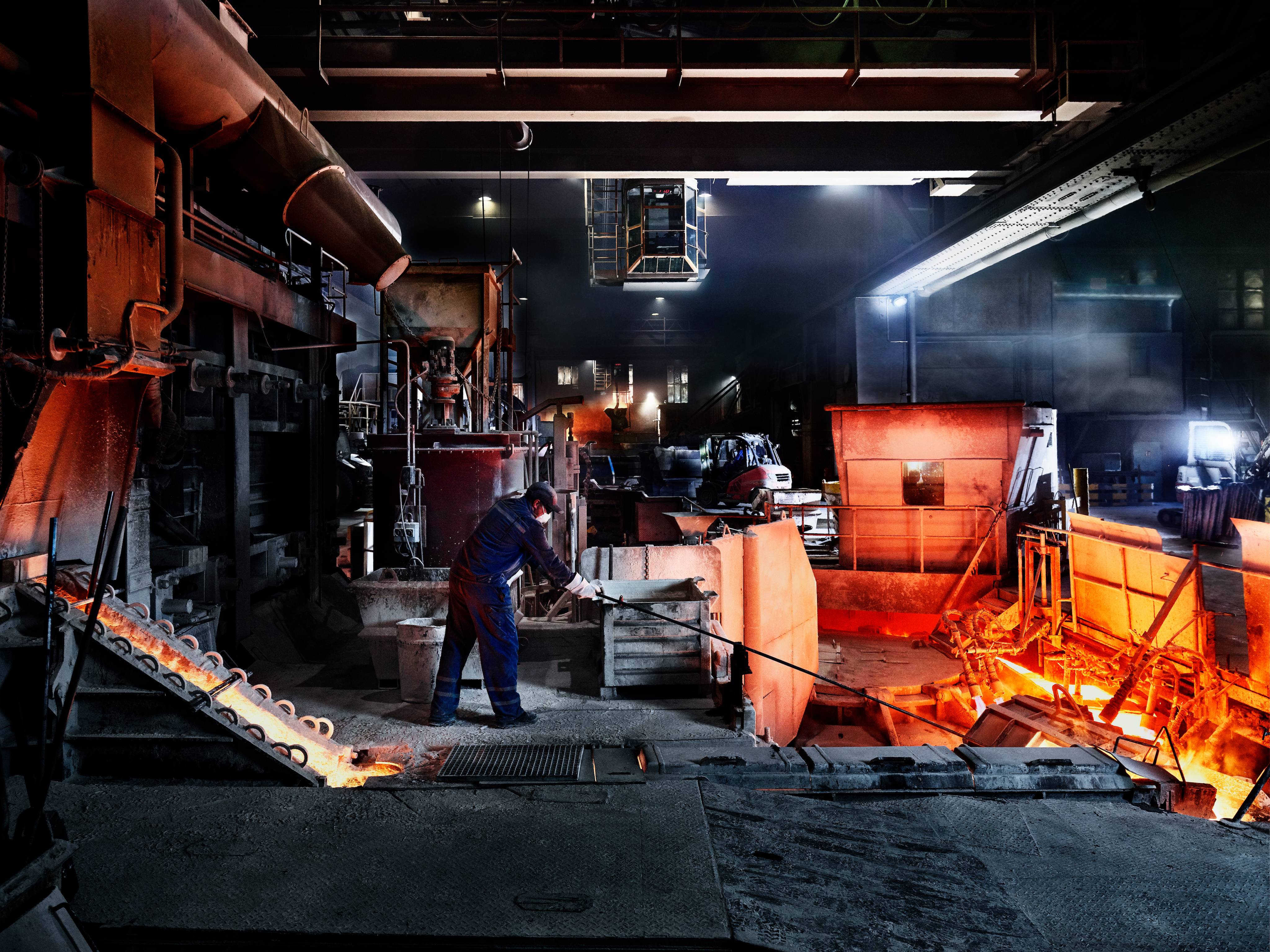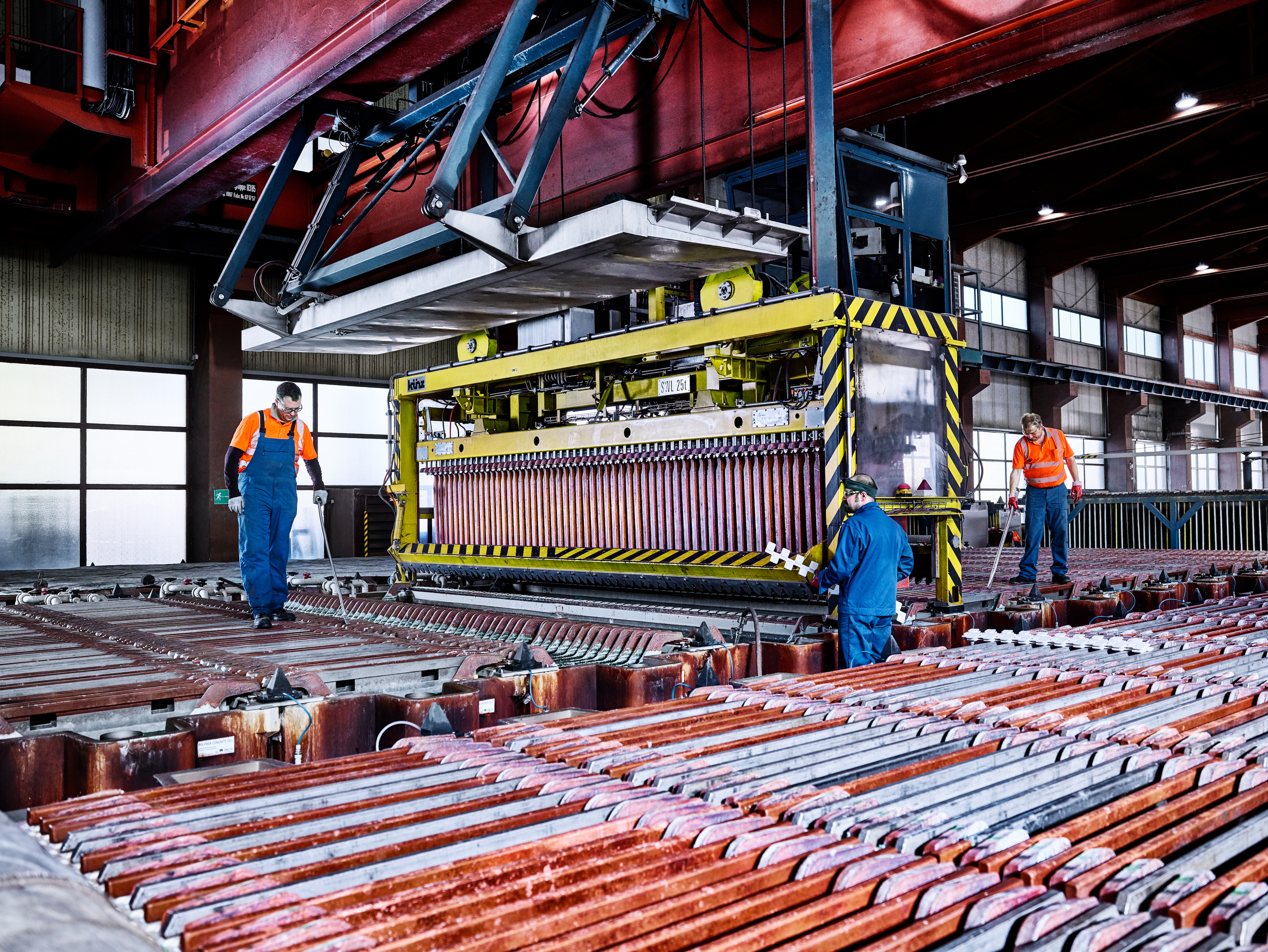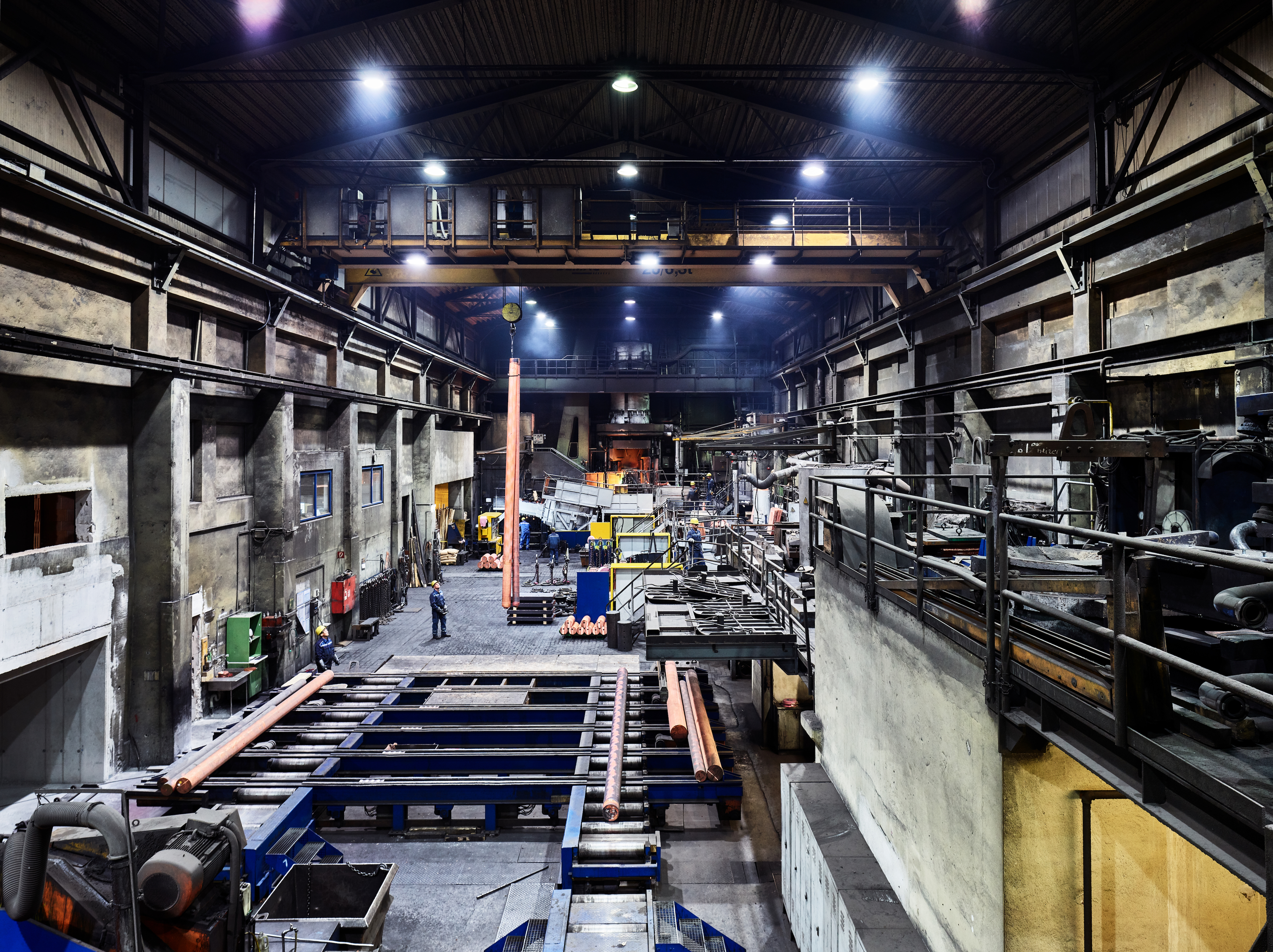
Upcycling
Recycling copper, again and again.
We purchase your metal scrap and process it into grade A cathodes or foundry formats. Our large network in the recycling industry helps us identify suitable partners who can process the scrap if necessary. This creates a transparent, verifiable resource cycle.
The transition to a circular economy as envisaged by the European Green Deal is a challenge for many companies. We have been living the circular economy for decades. 100% of our copper cathodes have come from secondary materials, i.e. recycled copper, since 1977. With our process, we are at the end and the beginning of the value chain. We use recycled raw materials to produce high-purity copper again. Unlike most other materials, all impurities can be dissolved during copper recycling, which means that our upcycled copper achieves the highest purity and quality – over and over again.

Our raw materials
The raw materials used in the production process are copper-containing dusts, ashes, drosses, shredded materials, sludges, and runback slag with copper contents between 15 and 60%, as well as other alloy scrap, such as brass, bronze, and red bronze with copper contents between 60 and 80%. The materials we use for refining, such as scrap copper, wires, profiles (rods, metal sheets, rails, etc.), and cut-up and sorted electrical cables contain around 80-99% copper. We use high-grade runback scraps from manufacturing semi-finished products directly in the foundry without refining. Alongside these solid raw materials, we also reprocess copper chloride solutions from the electronics industry.
The raw materials listed above contain copper as well as several other metals, such as nickel, zinc, tin, and precious metals. Following initial assessment and sampling, we use the raw materials in the shaft furnace, converter, anode furnace, or smelting furnaces, depending on the type of refining required.
It is important for us to inspect the secondary materials we receive for problematic substances such as mercury, cadmium, or lead, as well as to check for radioactivity. Following these assessments, which were devised by experts, we either reject the secondary materials or approve them for processing.

